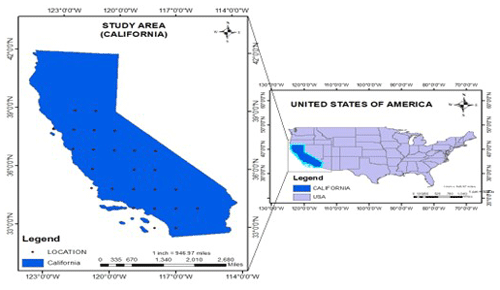Assessment of the evolution of groundwater quality for the state of California, United States using weighted index overlay analysis
Groundwater serves as a crucial source of drinking water, supports agricultural irrigation, and sustains aquatic ecosystems. However, contamination of groundwater poses significant risks to public health, food security, and ecological balance. Given that groundwater contributes an average of 40 % of California's water supply, ensuring its quality is of paramount importance for the state's municipalities, industries, and agricultural sector. To address this, rigorous groundwater quality assessment and monitoring are imperative to promote sustainable and safe utilization of these resources. Our study leveraged data from the California State Water Resources Control Board (CSWRCB) website, focusing on physiochemical parameters such as total dissolved solids, total hardness, and key cations (e.g., Ca2+, Mg2+, Na+ & K+) and anions (e.g., HCO, Cl−, SO & NO). Utilizing the Inverse Distance Weighted (IDW) interpolation method in ArcMap, we generated spatial maps to visualize groundwater quality across California. Furthermore, we applied the Weighted Index Overlay Analysis (WIOA) approach, assigning weights to various physiochemical characteristics based on World Health Organization (WHO) drinking water quality guidelines. Our study aims to facilitate the assessment and monitoring of groundwater contamination in the region, providing valuable insights and formulating a spatial database that can be utilized for effective decision-making and resource management in ArcMap through WIOA analysis.









